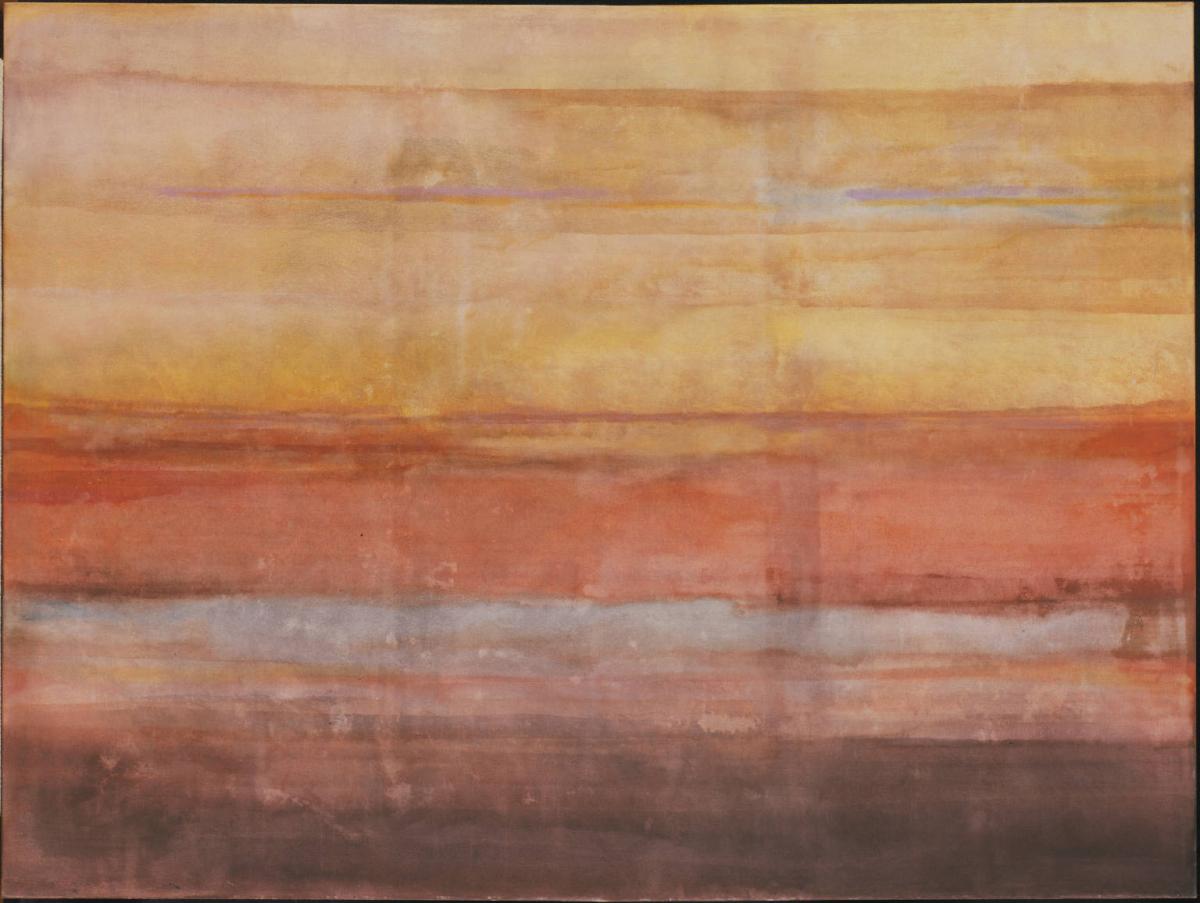Kiri Te
Willem de Looper ( 1972 )

Kiri Te has a horizontally striated composition, a style de Looper explored from 1970 to 1977. These paintings are characterized by subtly varied, muted colors that are swathed across the canvas in softly merging horizontal bands of acrylic. Kiri Te is composed of numerous bands varying in hue and width. As de Looper reminisced: “I used to pride myself that I could make endless variations of ochers, browns, and whites.”
From the beginning of his career in the early sixties, de Looper’s “ideal…was to be an abstract painter, a nonobjective painter,” and his work has continued to be process-oriented and formalist in conception. As he notes, artists of his generation were heirs to a new tradition, one in which experimental methods – staining, pouring, and the use of tools other than brushes – were favored. De Looper usually paints on an unprimed but stretched canvas that is laid on the floor thus allowing him to manipulate it physically, twisting and turning it to control the flow of paint. Kiri Te, a rare exception, was painted upright. After the initial wetting of the canvas with water and a thin wash of white acrylic, de Looper painted wet-into-wet, using rollers to layer numerous horizontals in hues of purple—violets, lavenders, mulberrys, lilacs, and magentas. Then he slowly applied, with roller and brush, horizontal layers of varying colors, beginning with a deep mulberry at the bottom and moving in sequence to a pale lilac, a sky-blue, rich plum-reds and magentas in the center, ochres, a touch of sky blue and violet, permutations of earth browns, and finally subtle variations of sandy beige. Throughout the composition hints of the first layers of purple emerge, and narrow bands of gold serve as delicate flourishes of contrast. The repeated layers of lean paint render a luminescent glow and amorphous space.
De Looper does not make preliminary studies, but rather works out his formal ideas directly on canvas in an intuitive manner. “I’ve always been interested in the discovery of painting,” he stated, “and making a new painting will continue to be my primary starting point.” He likens his approach to the improvisational nature of jazz, the strains of which serve as the backdrop to the painting process. While listening to jazz, or classical music, he does not make associations, but “see[s] music as a total abstraction.” Likewise, while his artistic vision may be quickened by nature, it is abstract in conception. Thus, although the title Kiri Te derives from the name of the renowned opera singer Kiri Te Kanawa, she is not the subject of the work nor should the work be interpreted by the title. De Looper was simply intrigued by the sound of her name. “I am inspired by what I see – the gilded surface of an Italian painting, the arc of an exhaust vent outside my studio,” he noted, “but these are not subjects any more than notes on paper are music.”